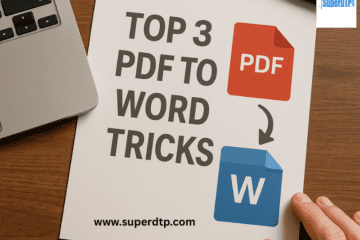Since the early days of computing, desktop publishing has advanced significantly. In the history of document generation and publication, the 1990s saw the development of INTERLEAF and QUICKSILVER. The creation and formatting of papers have been revolutionised by these software programmes, which have also increased productivity and decreased production costs for businesses. We will go into more detail about the effects of INTERLEAF and QUICKSILVER on the publishing sector in this blog article.
Introduction to QUICKSILVER and INTERLEAF
Early in the 1990s, desktop publishing software programmes like INTERLEAF and QUICKSILVER were released. In the aerospace and defence industries, INTERLEAF was largely utilised for technical documentation. On the other hand, publishers of newspapers and magazines tended to employ QUICKSILVER, which was used for general publishing. Users may easily create, modify, and format documents using both of these software programmes.
Before the invention of INTERLEAF and QUICKSILVER, creating documents required laborious manual formatting, typesetting, and proofreading steps. With the advent of these software programmes, experts could easily format and prepare documents, saving time and effort while still producing documents of a high standard.
In the aerospace and defence sectors, INTERLEAF was particularly well-liked because it made it simple for users to produce intricate technical documentation. The programme came with some features that made it simple to make and format charts, images, and tables. Technical writers and engineers frequently chose the software because it made it simple to cross-reference technical data.
Publishers of newspapers and magazines, on the other hand, were the main users of QUICKSILVER. The software was a popular option for print media since it made it simple for publishers to generate and arrange columns, headlines, and pictures. Additionally, QUICKSILVER came with a selection of templates and design tools that made it simple to produce eye-catching layouts.
Effect on Effectiveness
The effectiveness of the publishing sector was also significantly impacted by INTERLEAF and QUICKSILVER. Document production and formatting were time-consuming tasks that needed a lot of manual labour before the arrival of these software programmes. INTERLEAF and QUICKSILVER allowed experts to format papers more rapidly and effectively, cutting down on production time and expenses.
For instance, INTERLEAF made it simple for engineers and technical writers to update and amend technical publications. Multiple authors could work together on a single text using the software’s revision control system, which made it simple to keep track of updates and changes. Because manual revisions and proofreading were no longer necessary, the revision process became considerably more effective.
Additionally, QUICKSILVER increased productivity in the publishing sector. The software came with several design tools and templates that made it simple for publishers to make layouts that looked good. This made the manufacturing process more effective by lowering the time and effort needed to write and format newspaper and magazine articles.
Effect on the Cost of Production
The decrease in manufacturing costs was one of INTERLEAF and QUICKSILVER’s most significant effects on the publishing sector. Document production and formatting were time-consuming tasks that needed a lot of manual labour before the arrival of these software programmes. High-quality document production became costly as a result.
INTERLEAF and QUICKSILVER allowed experts to format papers more rapidly and effectively, cutting down on production time and expenses. This made it simpler for enterprises to produce documents of high quality at a cheaper cost, making it easier for small firms and organisations to publish documents with a professional appearance.
Interleaf and Quicksilver’s legacy
The legacy of INTERLEAF and QUICKSILVER continues even if they are no longer the industry standards for document generation and publication. Modern desktop publishing programmes like Adobe InDesign and Microsoft Publisher, which are now widely used in the publishing industry, were made possible thanks to the invention of these software programmes.
In addition, the launch of QUICKSILVER and INTERLEAF encouraged innovation in the publishing sector. As a means of increasing productivity and lowering costs of production, businesses and organisations started to invest in new technologies and software programmes. This sparked the creation of novel technologies that have once again revolutionised the publishing sector, including digital publishing and web-based publishing.
Conclusion
In summary, INTERLEAF and QUICKSILVER revolutionised the publishing sector. The creation and formatting of papers have been revolutionised by these software programmes, which have also increased productivity and decreased production costs for businesses. Since INTERLEAF and QUICKSILVER’s legacy opened the path for contemporary desktop publishing software and stimulated industry innovation, their influence can still be felt in the publishing sector today.


